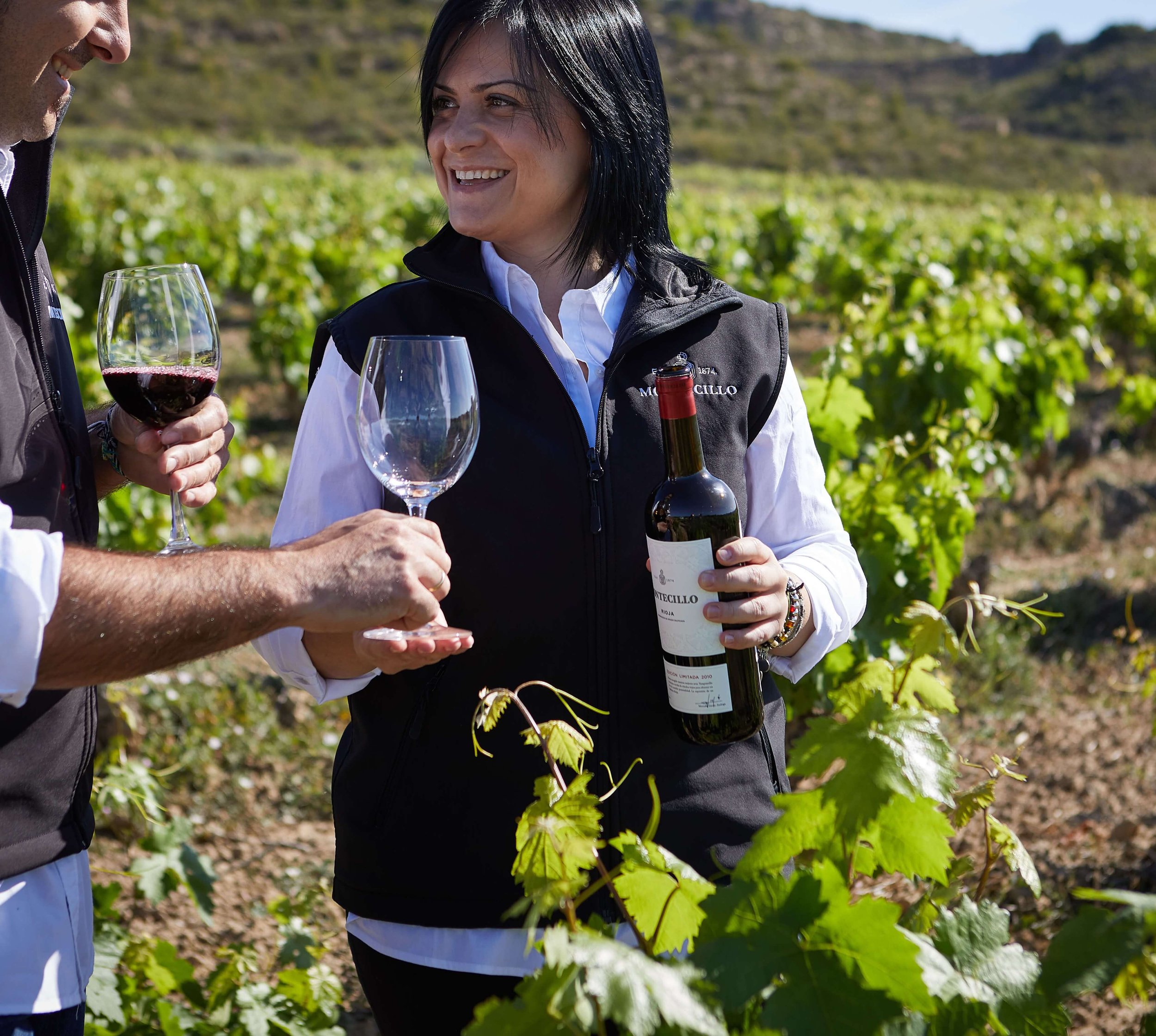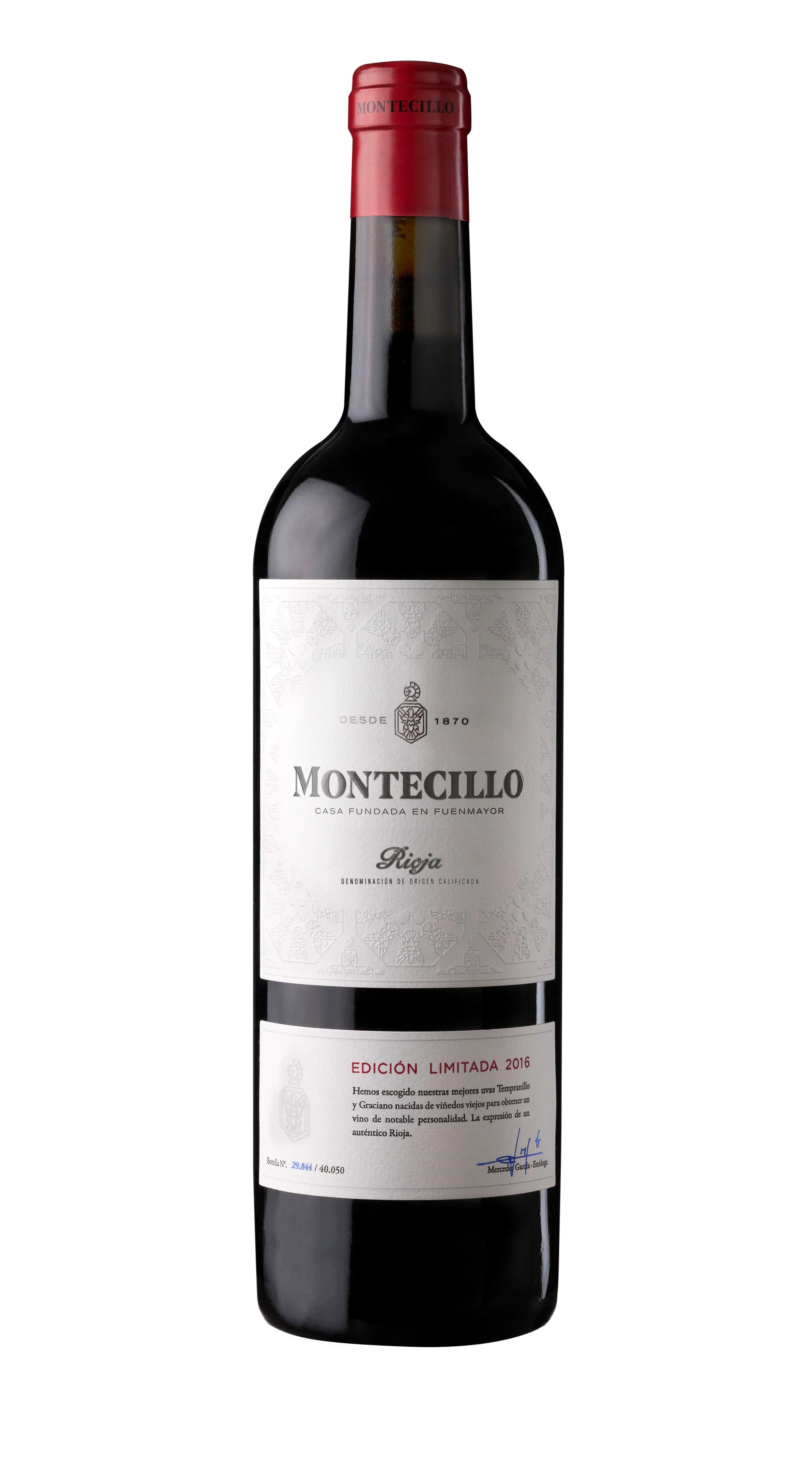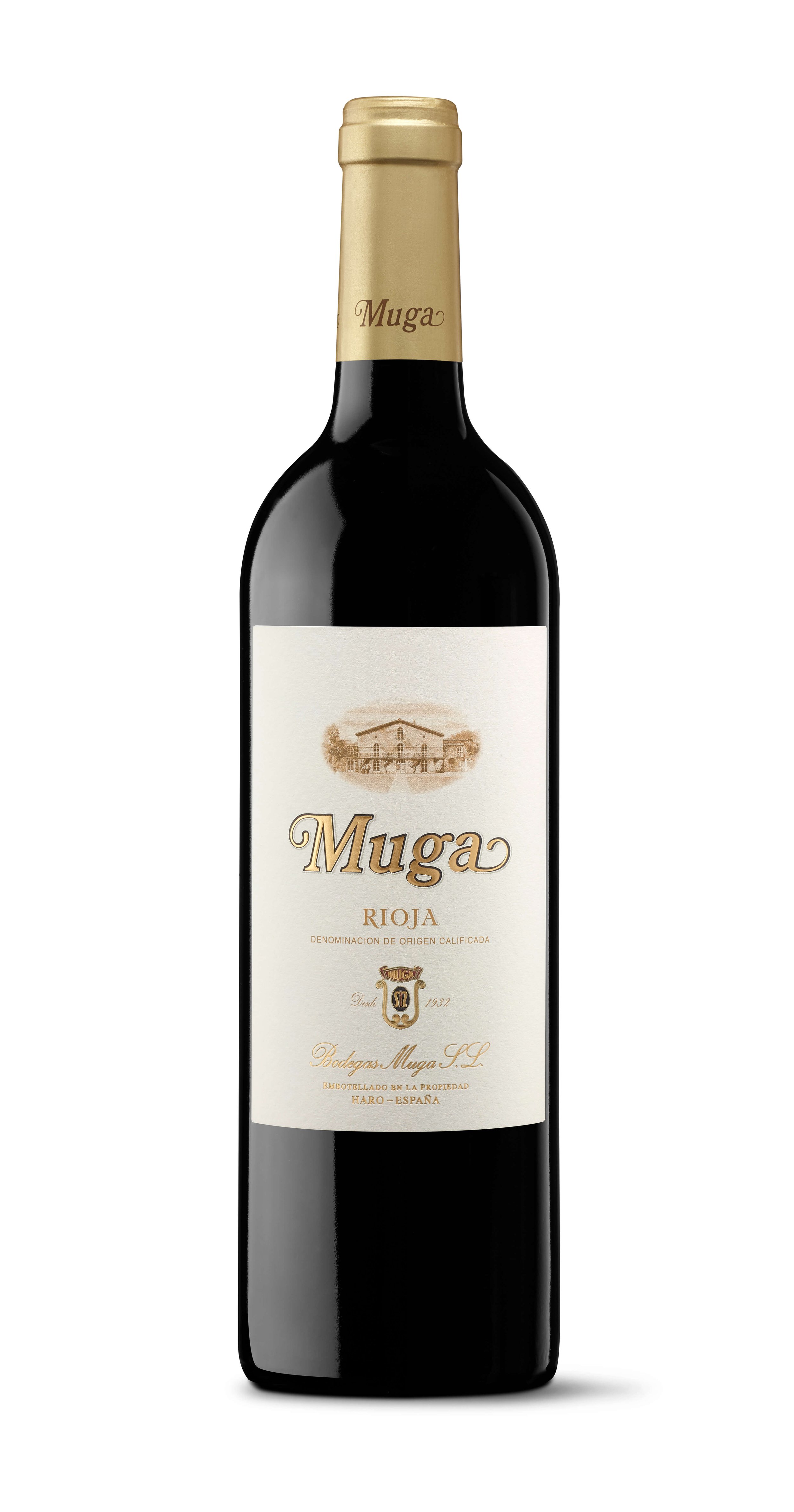Rioja 101: Exploring the Past, Present and Future of Spain's Most Famous Red Wine
It’s tempting to pigeonhole Rioja. But there’s a lot more to it than you may think. Rioja has been evolving in recent years, and in addition to still being one of Spain’s most respected Denominations de Origin (DOs), and a source for incredible Tempranillo-based reds, winemakers are producing age-worthy whites and rosés, and turning to autochthonous grapes and sustainable growing methods to contend with climate change.
The Land of Rioja
Wine has been made in Denominación de Origen Calificada (DOCa) Rioja since Roman times, and in 1650, the first document protecting its esteemed status was created.
The landlocked region in Northeastern Spain is named for the Oja River (Rio Oja), a tributary of the Ebro River. Most of the vineyards in the DOCa are planted near the Ebro River, which helps provide a built-in air-conditioning system—cooler in the summer, warmer in the winter—for the grapes.
There are about 160,000 acres of grapes under vine, cultivated by more than 16,000 growers for around 600 wineries, 200 or so of which export to the U.S.
Refined winemaking thrived in Rioja for centuries, but phylloxera and World Wars decimated the industry in the 20th century. A handful of wineries in Rioja, despite the odds, continued to produce age-worthy reds that rivaled Bordeaux and Burgundy in quality, but generally offered a better value in terms of price. In recent decades, the regional regulatory board and winemakers have democratized progressive and sustainable wine-growing and making standards for more growers and producers, elevating the quality of wines that retail for $20 and less considerably.
The Regions of Rioja
The vast appellation is divided into three subregions: Rioja Alavesa, La Rioja Alta and Rioja Oriental (previously known as Rioja Baja).
La Rioja Alta hugs the western flank of the area, and produces most (about two-thirds) of the wine. Rioja Alavesa, in central Basque country, produces about 20%. Rioja Oriental, along the east, is closest to the Mediterranean, and it produced about 10% of the region’s wine.
The Classifications of Rioja
Regions are one thing. But the classifications quickly become more complicated. In addition to labels noting where the grapes are sourced from, wine lovers can look for a seal that will give them an idea of how the wines were made.
Genérico wines are young, fresh and fruity, and they see little (if any) oak. Crianza wines have spent 1+ years in cask for reds, 6+ months for whites. Reservas are aged for at least two years in oak casks and six months in bottles for reds, and one year in oak casks and 6 months in bottle for whites and rosés. Gran reservas are not made every year; only in exceptional vintages. Reds see two years at least in oak, two years in bottles.
Reserva wines dominate the market in the U.S., and often offer the best quality at an affordable price. It should be noted that the aging requirements are the minimum; many producers (including the ones we highlight below) age their wines for longer, and will only release them when they are ready to drink. Still, the reds and whites are capable of aging for decades in the cellar, and will evolve and change over the years.
Further complicating matters is that, in a bid to highlight the distinct terroir of the wines—and the diversity of the region—in 2018, the DOCa began allowing new regional classifications, and it approved 145 village names for label inclusion.
The zone classifications are Generico (meaning the wines do not source grapes from one zone or vineyard), Vino de Zona (wines are sourced from one of the three approved zones), Vino de Munipio (wines produced primarily from grapes from one village) and Vinedo Singular (wines made from unique vineyards with vines that are at least 35 years old, low yield, hand harvested).
Most wines (about 90%) from Rioja are still red. Tempranillo defines the blend, with DOCa-approved input from Garnacha Tinta, Graciano, Mazuelo and Maturana Tinta. Approved white varieties are Viura, Malvasia, Garnacha Blanca, Tempranillo Blanco, Maturana Blanca, Turruntés, Chardonnay, Sauvignon Blanc and Verdejo.
While Rioja built its reputation on blends, in 2018, the DOCa began allowing single-varietal white wine production.
The whites—also known as Rioja blanco—are generating increasing interest from wine lovers who gravitate toward both the mineral-driven fresh expressions and the more complex oak-aged whites producers are experimenting with.
Wineries Elevating Rioja
The wine scene in Rioja is extraordinarily exciting right now. These wineries embody some of the most compelling developments.
Bodegas Montecillo: Elevating Rioja
It would be easy for the third-oldest winery in Rioja to coast on its considerable reputation. But Bodegas Montecillo’s winemaker Mercedes Garcia Rupérez has been working to modernize the production of the wines, while doubling down on sustainability and quality measures.
The winery works with 100 or so families of growers on 500 acres across all three regions, the majority of which are in La Rioa Alta. Most of the vineyards are at high elevations (up to 2,615 feet above sea level), with low-vigor, old vines, some of which are more than 120 years old.
Garcia Rupérez deploys advanced winemaking tech (such as Ganimede system tanks that control barrel aging processes and clean the barrels from within), and is also experimenting with a new 7-acre organic and biodynamic vineyard, one of the few classified as a Vinedo Singular Geographical Indication. She also works with her growers to improve their farming and growing techniques.
“Knowing the potential of each vineyard to produce a certain style of Rioja wine—Crianza, Reserva, Gran Reserva—and classifying them by quality allows us to vinify with a logical criterion,” Garcia Rupérez says. “It also allows us to plan the winemaking for each vineyard based on style and what we hope to achieve.”
It also, she adds, allows them to ensure they winery has a variety of unique vineyards that will showcase an array of classic Rioja styles.
A bottle to try: Montecillo Edición Limitada 2016: A blend of 75% Tempranillo and 25% Graciano. Deep cherry red, with a bluish rim. Ripe black fruit, purple plums, mocha, vanilla, silky tannins.
Pair it with: Roasted game, charcuterie.
Another bottle to try: Montecillo Blanco: A blend of 36% Viura, 32% Tempranillo Blanco, 32% Sauvignon Blanc. Golden, with notes of passion and grapefruit, brioche, apples.
Pair it with: Grilled squid, gazpacho, roasted shrimp.
Bodegas Vivanco: Innovation and Experimentation
Vivanco Winery, with just over 100 acres of estate grapes under vine, is located on the banks of the Ebro River in La Rioja Alta, in the foothills of the Sierra de Cantabria.
The winery itself has become one of the most popular sites for oenotourism in the country, thanks in large part to the Vivanco Museum of Wine Culture, sprawling across four floors with thousands of items on display, from major artworks from Picasso and Juan Gris, to historical wine presses and urns.
Winemaker Rafael Vivanco’s daring experimentations have garnered equally enthusiastic interest from critics. He was one of the first winemakers in the region to focus on whites and sparkling wines made from Maturana Blanca, Tempranillo Blanco, Viura and Chardonnay.
The rare Maturana Blanca was recently rescued from near-extinction, and its brightness, structure and depth make it a promising varietal in the fight against climate change.
A bottle to try: Vivanco Viura-Tempranillo Blanco-Maturana Blanco: A blend of 50% Viura, 35% Tempranillo Blanco, 15% Maturana Blanco. Pale yellow with green. Grapefruit, white peaches, orchard apples, white flowers.
Pair it with: Spanish tortilla (essentially a golden potato omelette), salmorejo (a cold and creamy tomato soup).
Bodegas Campillo: A Modern Spin
Bodegas Campillo is the new kid on the block. Opened in 1990 by Julio Faustino Martinez in Rioja Alavesa, the 140-acre estate vineyard rests in the foothills of the Sierra de Cantebria.
Here, the focus is on modern expressions of Rioja, with grapes grown at high elevations, utilizing new red and white blends, clonal experimentations and French oak for both barrel fermentation and aging. Everything about Campillo reflects the classic French Chateau model—from the winegrowing and production, to the meticulously designed stone winery rising majestically above the wines.
Inside the winery and the bottle, modernity, luxury and tradition come together for a distinctly contemporary iteration of Rioja.
“Bodegas Campillo wines move naturally between the modern and traditional Rioja styles,” says Elena Larrea Dueñas, director of marketing for Campillo. “Its most classic range embraces long ageing times in barrels and the use of traditional grape varieties. The winery uses modern techniques to produce more versatile wines as well. A focus on innovation is what makes Bodegas Campillo a true reflection of the spirit of the DOCa.”
A bottle to try: Bodegas Campillo Crianza 2018: A Tempranillo that pours our cherry red, with a ruby edge. Red and black currants, black cherries, plums, pepper, vanilla, mocha.
Pair it with: Roasted mushrooms, cod, aged sheep’s milk cheese like Manchego.
Bodegas Muga: Powerful Legacy
With 620 of estate vineyards and contracts with growers across another 370 acres, Bodegas Muga has built an empire dedicated to terroir-driven expressions of La Rioja Alta.
At Muga, which the Muga family founded in 1932, everything is controlled and protected, from the grape-growing to the in-house barrel-making.
Muga is one of the most traditional wineries in the world when it comes to production (oak for fermentation and aging, enormous 1,000+ gallon upright wood casks, indigenous yeasts, many years in barrel and bottle), and one of the most progressive when it comes to outreach and experiential tourism (hot air balloon rides and Segway tour anyone?).
“Bodegas Muga has a lot of special innovations like our own cooperage – where we select the wood used to make our vats and casks, racking using only gravity and fining the wine with fresh egg whites,” says Eduardo Muga, co-owner of the winery. “We also harvest by hand and follow a philosophy of minimum intervention by using sustainable techniques and advanced technology like optical grape selection machinery. Our family also strategically plans the business, keeping tradition at the center. We control all the phases from the bodega itself, to the cultivation of the vines, to the production of our wines, and their distribution and sale.”
A bottle to try: Bodegas Muga Reserva 2018: A blend of Tempranillo, Garnacha Tinta, Mazuelo, Graciano. Pours ruby-red with a garnet rim. Notes of raspberries, blackberries, ripe red cherries, chocolate.
Pair it with: Jamón Iberico, vegetarian tapas, olives.






